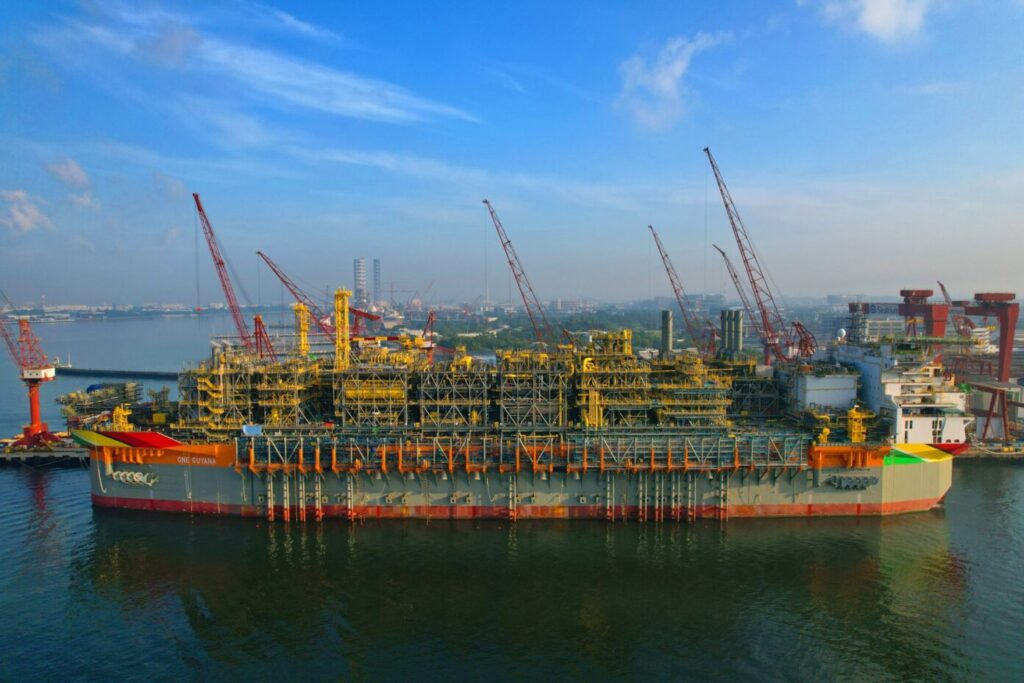By Kiana Wilburg
CEO, Guyana Energy Conference & Supply Chain Expo
Laser-focused on having its oil and gas industry armed with world-class standards, the Guyana Government has implemented several measures in the first six months of 2024 to modernise its legislative and regulatory tools for management.

Building on several key milestones reached in the past four years, such as the passage of a robust Local Content Law and a new fiscal regime for the oil sector, regulators implemented more than 20 critical policy decisions, under the guidance of the Head of State, Dr. Mohamed Irfaan Ali, and his chief policy advisor on the sector, Vice President, Dr. Bharrat Jagdeo.
See list below for an Executive overview of these decisions:
1. In the first half of 2024, the government commenced working on key pieces of legislation governing the sector. Of these, noteworthy is the drafting of regulations to enforce the provisions of the Petroleum Activities Act (PAA), passed in 2023. Upon completing the draft and key stakeholder consultations, the regulations will be finalised and presented to the National Assembly later this year.
2. Still on legislation, of note is the commencement of the drafting of the National Oil Incident, Emergency Response, and Financial Responsibility Bill 2024. This Bill, while addressing other areas, will deal with the management of and financial responsibility for oil spills and environmental damages from petroleum activities. The Bill will be completed for public consultation and subsequently tabled in Parliament by the end of this year.
3. Works have also started on the Health and Safety Regulations for the oil and gas sector.
4. The government had approved ExxonMobil’s Whiptail Project in April of this year, the sixth development for the oil-rich Stabroek Block. The Operator, (ExxonMobil Guyana Limited) was mandated, via the Petroleum Production License (PPL), to include a Decommissioning fund in keeping with the PAA 2023. The fund is intended to safeguard Guyana from the risk of financing decommissioning liabilities. The Whiptail PPL was also conditional on the Operator, at all times, having insurance, with documentation to be provided to the Government before start-up.
5. The government has also mandated the procurement of a capping stack in-country and additional subscriptions for the Stabroek Block, in keeping with the provisions of the Yellowtail PPL. This equipment, designed to be placed as a cover over a blow out well to stop or redirect the flow of hydrocarbons, was commissioned in July 2024, enhancing the sector’s oil spill capabilities, Notably, it makes Guyana one of only two oil-producing countries in Latin America and the Caribbean and of 13 globally to have such a mechanism in place.
6. Notably, the Environmental Protection Agency continued to strengthen its monitoring capabilities of operations offshore. Over the years, the regulator, through strategic collaborations, has ensured access to real-time data on offshore oil operations, including drilling activities, gas flaring, and potential environmental threats such as oil spills. By utilizing NASA’s satellite imagery and Maxar’s high-resolution Earth observation capabilities, the EPA can remotely track critical aspects of operations in the Stabroek Block, where ExxonMobil, Hess Guyana Exploration Limited, and CNOOC Petroleum Guyana Limited are major stakeholders. The EPA has also deployed water-quality sensors to continuously monitor environmental conditions in real time. These sensors, financed through government funds, provide comprehensive data on surface water pollutants, such as turbidity, pH levels, and total dissolved solids.
7. The Guyana Revenue Authority also made progress by staffing key departments examining oil companies’ revenues and cost recovery statements as well as performing customs controls. Regarding the latter, an office has been operationalised at the Customs Boathouse to ensure timely processing of ingress and egress of vessels and lodging of requisite documentation.
8. Moreover, Standard Operating Procedures have been crafted by the Guyana Revenue Authority and once approved by the Customs and Trade Administration, will enhance the monitoring of all shorebases, including the examination of outbound vessels with oil and gas related items; closure of files; and the presence of officers aboard installation vessels with helipads for the examination of cargo outbound and inbound.
9. Notably, all key government agencies benefitted from capacity building in the first half of the year, particularly in crude marketing, economic modelling, and cost benchmarking. Following these training sessions, the QUE$TOR Software was procured to enable the agencies to examine cost and revenue statements as well as field development plans (FDP) and work programmes submitted by the oil companies.
10. In the area of exploration, the government is actively engaging all operators on the relinquishment of areas this year. Notably, a portion of the Stabroek Block will be returned to the State in October. These areas are likely to be included in the second offshore auction round. Discussions are ongoing to determine the most effective timeline for this licensing round given other auctions globally.
11. To strategically encourage further development and production, Guyana must have a good assessment of the potential petroleum resources. As such, the government reviewed eight expressions of interest received in June 2024 to conduct seismic surveys offshore. Seven companies were invited to submit proposals to the Government for consideration. An evaluation will be completed in the second half of this year, as well as the subsequent award of the contract.
12. The Government, at the start of the year, included a budgetary provision for the procurement of a consultant to establish a petroleum data repository, with arrangements for same to be finalized in the second half of 2024. This will allow for the migration of all historical and current data to a central location locally. At present, Guyana’s data is stored in Houston, Texas. Companies seeking additional information related to Guyana’s oil prospects must make a special request to access this overseas facility.
13. At the project level, the three FPSOs in the Stabroek Block, Liza Destiny, Liza Unity, and Prosperity, all underwent optimisation and topsides debottlenecking activities in the first half of the year. The FPSOs produced at an average of 157,000 bpd, 245,000 bpd, and 222,000 bpd, respectively, while reaching the highest collective rate of 644,000 bpd in June 2024.
14. Guyanese regulators have commenced the review of an application from ExxonMobil-led consortium for environmental authorisation for the seventh proposed development in the Stabroek Block, styled Hammerhead. It requires an Environment Impact Assessment to conclude the evaluation.
15. Notably, the government continues on the trajectory to transition to cleaner sources of energy and is aggressively developing gas resources. Towards this end, the draft of the National Gas Strategy commenced this year, with feedback incorporated from the public consultations in 2023. The document will be adapted into a Gas Monetisation Strategy and is expected to be finalised by the fourth quarter of this year. It will determine how Guyana intends to tap and use its 17 trillion cubic feet of gas resources.
16. Regarding the government’s interest in gas infrastructure to support upstream developments, an evaluation was completed on 17 proposals. Fulcrum LNG was determined as the most competent bidder to design, finance, construct and operate that structure.
17. The Gas-to-Energy (GtE) Project is progressing with the government recently issuing a tender for qualified firms to submit proposals for a second natural gas-fired power plant at Wales, West Bank Demerara (WBD). It will be located immediately adjacent to the 300MW facility that was already approved for construction. Together, the two plants would deliver 550MW of power by 2025. Notably, Phase Two of the GTE project will include a NGL processing plant alongside the power plant, just like the first phase.
18. To guide revisions to the Local Content Act 2021 later this year, a review of the law’s first schedule—which contains 40 categories of work which Guyanese must be given first preference in and used in varying degrees—is ongoing alongside public consultations. The feedback thus far already signalled enhanced capacity to supply 25 additional services.
19. Notably, the development of a Local Content Mobile App was progressed in the first half of this year. It is expected to be operational by year end, all with the aim of disseminating information more widely, enhancing transparency and participation of locals while also reinforcing credibility of the procurement process.
20. Additionally, the Secretariat engaged key players in the sector as well as eight technical institutes to finalize a 3- month paid internship programme. It initially targetted 100 interns for placement in over 25 companies in the sector. To date, more than 45 students have been assigned to the various companies under the programme.
As Guyana sharpens its focus on both development and regulation, it is clear that the nation is not merely preparing to extract its rich oil reserves but to manage them with an unprecedented level of responsibility and foresight, ensuring maximum benefits for future generations.


